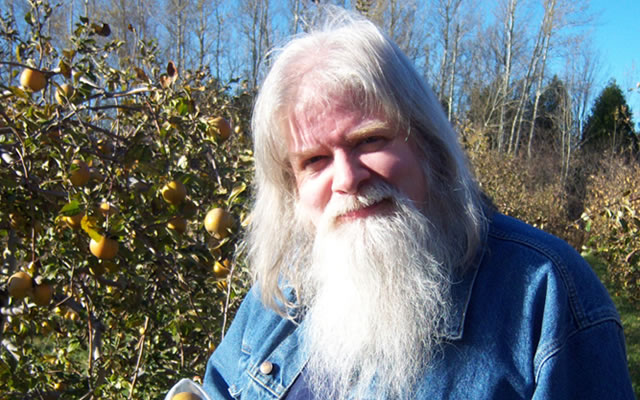



| "These things also I have observed: that knowledge of our world is
to be nurtured like a precious flower, for it is the most precious thing we have. Wherefore GUARD the word written and heed words unwritten--and set them down ere they fade . . . Learn then, well, the arts of reading, writing, and listening true, and they will lead you to the greatest art of all: understanding." -- Alaundo of Candlekeep |
Credits
Design: Ed Greenwood
Design and Development: Jeff Grubb
Editing: Karen S. Martin
Cover Art: Keith Parkinson
Interior Art: Jeff Easley, Keith Parkinson, Tim Conrad
Cartography: Diesel, Dave Sutherland, Dennis & Ron Kauth
Graphic Design: Stephanie Tabat
Calligraphy (Runes, Sigils, Languages): Paula M. Holz
Deity/Faith Symbols: David E. Martin
Typography: Betty Elmore
Map of the Forgotten Realms +
Encounter Tables +
Halls of the Beast Tamers +
NPCs +
Pages from the Mages +
Reconstruction
+
CYCLOPEDIA OF THE REALMS
Introduction +
About This Product +
Time in the Realms +
Names in the Realms +
Languages of the Realms +
Currency of the Realms +
Religion in the Realms +
Abeir-Toril
+
Adventuring
Companies +
Aglarond +
Amn +
Anauroch +
Arabel +
Archendale
+
Asbravn +
Ashabenford
+
Baldur's Gate
+
Barbarians
+
Battledale
+
The Battle
of the Bones +
<Berdusk>
+
Beregost +
Boareskyr
Bridge +
Calantar's
Way +
Calimshan
+
Candlekeep
+
Calaunt +
Cavaliers
&& Paladins +
Chessenta
+
Citadel
of the Raven +
Clerics + <temp>
Cloak Wood
+
Corm Orp +
Cormyr +
Daggerdale
+
Daggerford
+
Daerlun +
The Dalelands
+
Damara +
Darkhold +
Deepingdale
+
Dhedluk +
Dragons +
Dragonspear
Castle +
Druids
+
Durlag's Tower
+
Dwarves and the
Shards of the Dwarven Kingdoms + <>
Easting +
Elturel +
Elves and the Elven
Nations +
Espar +
Essembra
+
Eveningstar
+
Evereska +
Evermeet +
Elversult
+
Featherdale
+
Fields of
the Dead +
Fighters
+
<Flaming
Fist +>
<Friendly
Arm +>
The Forgotten
Forest +
Glacier
of the White Worm +
Glister +
The Goblin Races
+
Gnomes +
Greycloak
Hills +
Halfaxe Trail
+
The Half-Elven
Peoples +
Hobbits +
Hammer
Hall and the Halls of the Hammer +
The Harpers
+
Harrowdale
+
The Haunted
Halls +
The High Dale
+
High Horn +
The High Moor
+
Highmoon
+
Hill of
Lost Souls +
Hillsfar +
Hill's Edge
+
Hilp +
Hlintar +
Hluthvar +
Huddagh +
Immersea +
Impiltur +
Iriaebor +
The Iron House
+
Kara-Tur +
Knights
of the North +
The Knights
of the Shield +
Kulta +
Lantan +
The Laughing
Hollow +
The Living City
+
The Lonely Moor
+
The Lord's
Alliance +
Magic-Users (Including Illusionists) +
Mankind +
Marsember
+
Marsh of
Chelimber +
Maskyr's Eye
+
Melvaunt +
Mercenary
Companies +
Merchant
Companies +
Mintarn +
Mistledale
+
Moonsea +
Moonshae
Islands +
Mulhessen
+
Mulhorand
+
Mulmaster
+
Myth Drannor
+
Neverwinter
+
Ordulin +
Nimbral +
The North +
Orlumbor +
Pirate
Isles of the Inner Sea +
Priapurl +
Pros +
Proskur +
Procampur
+
Rangers +
Rashemen +
Raurin +
Reddansyr
+
Saerloon +
Scardale +
Scornubel
+
Sea of Swords
+
Selgaunt +
Sembia +
The Shaar +
Shadowdale
+
The Shadow
Thieves +
Skull Gorge
+
Sossal +
Soubar +
The South +
The Standing
Stone +
Surd +
Suzail +
Sword Coast
+
Tarkhaldale
+
Tasseldale
+
Teshendale
+
Tethyr +
Teziir +
Thar +
Thay +
Thieves and their Sub-classes +
Tilver's Gap
+
Triel +
Trollclaw
Ford +
Tsurlagol
+
Tulbegh +
Turmish +
Tyrluk +
Unther +
Urmlaspyr
+
Vaasa +
Vale of
Lost Voices +
Vilhon Reach
+
Voonlar +
Waterdeep
+
Waymoot +
The Way Inn +
Westgate +
Wheloon +
The Wood
of Sharp Teeth +
Yellow Snake
Pass +
Yhaunn +
Yrlaphon +
Yulash +
The Zhentarim
+
Zhentil Keep
+
Table of Contents
Introductions +
Using the Forgotten Realms +
Into the Forgotten Realms
+
Setting Up for AD&D Game Adventures +
Selected NPCs of the Realms +
Recent News and Rumors in the Realms +
Year of the Worm +
Year of the Prince +
Adventure Background +
The Halls of the Beast-Tamers +
Lashan's Fall +
Books of the Forgotten Realms +
Index +
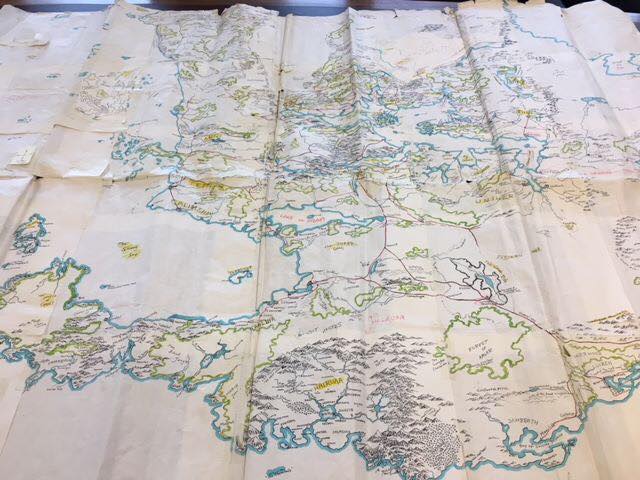
Credits
Design: Ed Greenwood
Design and Development: Jeff Grubb
Editing: Karen S. Martin
Cover Art: Keith Parkinson
Interior Art: Jeff Easley, Keith Parkinson, Clyde Caldwell, Tim Conrad
Cartography: Diesel, Dave Sutherland
Calligraphy (Runes and Sigils): Paula M. Holz
Graphic Design: Stephanie Tabat
Typography: Betty Elmore
Printed in the U.S.A.
ISBN 0-88038-472-7
1031
<note: all of the following are works in progress>
| FR1 Waterdeep and the North | FR2 Moonshae | FR3 Empires of the Sands | FR4 The Magister | FR5 The Savage Frontier |
| FR6 Dreams of the Red Wizards | - | - | - | - |
The Theory &&
Use of Gates ++
Gems Galore
+
Music of the
Forgotten Realms +
Woodlands of
the Realms +
<references>
<- Realms
and Remembrance, by Jeff Grubb>
Grubbsmall.jpg)
1) The original Forgotten Realms was a setting created by Ed Greenwood.
I tag along as co-creator when it comes to the published product you’ve
seen (starting with the Grey Box). I’m the sidekick in this relationship,
or as I tend to put it - he's the architect, I'm the engineer.
- Realms
and Remembrance, by Jeff Grubb
2) The Realms predates D&D, and was
a setting for Ed’s stories long before there were RPGs. It joins Greyhawk
(miniatures game) and Tekumel (stories and language) in that category.
- Realms
and Remembrance, by Jeff Grubb
<note: not sure about Greyhawk, there>
3) The first FR story was written in 1967
by Ed, One Comes, Unheralded to Zirta. It involved Eliminster, Mirt, Waterdeep,
and magical crossdressing. Ed was eight years old at the time.
- Realms
and Remembrance, by Jeff Grubb
4) Ed was an early adaptor for D&D
and soon began to send articles into DRAGON Magazine. He would couch them
in a framework of “Elminster drops in on Ed and raids his fridge and tells
Ed about Seven Magical Swords of the Realms”. Initially the editors would
cut out those parts, but after a while they relented and the rest of the
world would find out about Elminster and the Realms.
- Realms
and Remembrance, by Jeff Grubb
5) In the wake of the success of Dragonlance,
TSR management were suddenly interested in publishing another world, because
Dragonlance might peak and then where would we be? (quit laughing, it was
a reasonable concern). I was the poor schmuck that pointed out that Ed
was writing things about his world and maybe it would be interesting to
find out more? And that was how I ended up working on FR and serving as
product manager for the early years.
- Realms
and Remembrance, by Jeff Grubb
6) TSR bought the Realms for a relatively
modest amount of cash, a Mac Plus computer, and promise to publish novels
he wrote. Later, when we were very happy with him, we bought him a hard
drive to go with the computer.
- Realms
and Remembrance, by Jeff Grubb
7) Ed started sending me his typewritten
notes. At the time Ed had access to a photocopier (as a librarian) but
not the now-ubiquitous cut-and-paste feature of the computer. So he would
write stuff up, cut it up physically and photocopy the results. This resulted
in huge masses of text. Plus the ‘t” key of his typewriter was non-functional,
so he would go in afterward and draw in all the “t’s”. It was like reading
a little graveyard on every page.
- Realms
and Remembrance, by Jeff Grubb
8) He also photocopied his original maps
and sent them. I believe the original Realms map was on 24 8 ½ by
11 sheets of paper. The original map of Waterdeep was larger still, and
ended up being the inspiration for the City System product. When we got
the maps, we spent a day fitting them together. I colored the originals
in with yellow (roads), green (forest edges) and blue (water edges) highlighters.
- Realms
and Remembrance, by Jeff Grubb
9) The maps were hand-drawn and lettered,
which led to some confusion. The “Lost Empire of Cavenauth” was originally
a site on Ed’s map known simply as “cavemouth”.
- Realms
and Remembrance, by Jeff Grubb
10) Ed was always very accommodating about
changes made to the original Realms maps. We drained half of the Great
Glacier, redrew the Moonshae Isles, and added Ten Towns, among other things,
before the product saw print.
- Realms
and Remembrance, by Jeff Grubb
13) I contributed Festhalls to the Realms.
Ed’s original city maps had a high population of brothels, which made them
inadvisable to publish. Our choices were rename them or rekey all the maps.
I came up with the festhall name, which by definition spread out to handle
a multitude of sins (feasts of both foods and flesh, and a bit of day spa
added as well). I am very aware when someone else uses them in a fantasy
novel.
- Realms
and Remembrance, by Jeff Grubb
14) Ed called his campaign the Forgotten
Realms with the idea that the Realms were always there, right next door,
but we had forgotten them. The people that lived there called their area
Faerun. Ed had no name for the planet, and I contributed the name of my
home campaign – Toril (originally Toricandra – I was a CS Lewis fan (though
not of Narnia, surprisingly)).
- Realms
and Remembrance, by Jeff Grubb
17) For the original maps I wanted a parchment-look
for them. What we ended up with what a friend and manager referred to (loudly)
as “urine-yellow maps”. He demanded they be replaced with future expansions,
with a color I referred to (loudly) as “Fiestaware orange”.
- Realms
and Remembrance, by Jeff Grubb
18) I was always very proud of that plastic
overlay in the grey box, by the way. We had done hexgrids for the beautiful
Greyhawk map and Dragonlance, so I wanted to get away from a hexed look,
but still be useful to players. The big openness on the map was so the
players could add their own stuff. The idea was so cool Mayfair games lifted
it for their City State of Invincible Overlord, keeping the plastic template
and only erasing the FR logo on it. It didn’t fit with their product, but
it was cool-looking.
- Realms
and Remembrance, by Jeff Grubb
20) Just as the maps were supposed to look
like parchment, the interior was supposed to look like an old book as well.
Which is why the original set was printed in brown ink on brown paper.
I was worried it would be too dark.
- Realms
and Remembrance, by Jeff Grubb
21) A lot of what we concentrated on in
the original boxed set was based on what Ed had written up. That’s why
we had a lot on Rashemen and the Dales and not so much on, say, Impiltur
and Sembia. Most of the material in the summary and game mechanics is mine,
most of the material in Elminster’s Notes is Ed (well, edited Ed).
- Realms
and Remembrance, by Jeff Grubb
22) The guy on the cover? I have no idea
who he is. I think we retconned him later. He was a great Keith Parkinson
art piece, and I loved it.
- Realms
and Remembrance, by Jeff Grubb
<note: according to the TSR cards,
his name is "Thunderstorm">
25) We retrofit a number of D&D Products
that were in the works into the Realms, including N5, Under Illefarn, the
Bloodstone Pass H series, and I3-5, which were being repackaged. Part of
what made this work was the idea that the Realms was everyone’s campaign
from 1975, and was supposed to be able to handle most of what the DMs would
throw at it.
- Realms
and Remembrance, by Jeff Grubb
<note: it is N4 that was retrofit,
probably not N5. if N5 was retrofit, then, it was before publication>
27) I ended up the de facto product manager
for the Realms line because I knew where all the bodies were buried when
we created the first boxed set. During that time, I ended up talking with
Ed once or twice a week (he was in Canada) and working through things.
- Realms
and Remembrance, by Jeff Grubb
24) The “Year of the X” construction for the years was Ed’s. It allowed
him to pull some past year out of his ears in play and create the illusion
of history. Years later we would fill in all the rest of them (Though I
don’t think they kept my “Year of the Screeching Vole”)
- Realms
and Remembrance, by Jeff Grubb
<move this one to the timeline section>
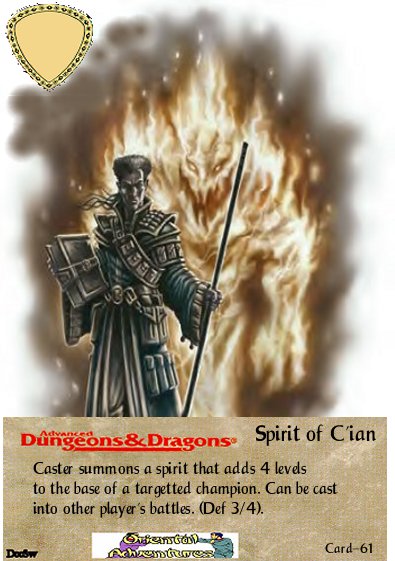
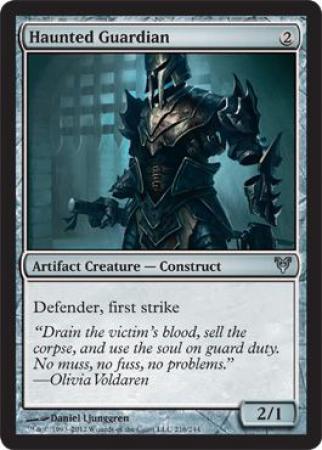

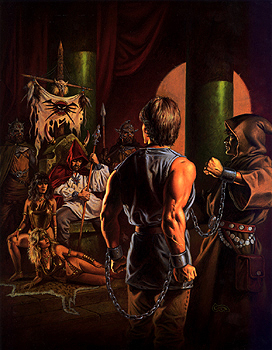

Now as for a campaign setting,
of course I prefer the WoG to FR, as I wrote
so much of the former, am intimately familiar with the original work.
I hasten to add that there
are many buffs that are now better informed that am I in regards to the
world setting.
Having perforce left it
for going on two decades, one tends to forget as new material is created.
Gary
Comments: Greyhawk for the
win!
Quote:
Originally posted by Alzrius
If I'm asking a question
that has been asked before, feel free to brush me aside: I keep meaning
to read through the older threads of your Q&A, but never seem to get
around to it.
What did you think of Ed
Greenwood's Forgotten Realms when you saw it, compared to your own World
of Greyhawk?

When Ed Greenwood's Forgotten
Realms hit I never got around to examining it as a world setting.
Had it been published while
I was still active in TSR management it would have been a different story,
of course.
As it happened, though,
I was already involved with conceptualization of a new RPG system, so I
didn't spend time with others' creative work.
Cheers,
Gary
Quote:
Originally Posted by Edena_of_Neith
(considers all of the posts
above)
Based on your posts, I doubt
you'll care much for the IR. I'm afraid that in this particular case, the
entire campaign world was altered beyond recognition pretty quickly.
My question at the start
set the precedent (the Canon Forgotten Realms setting would have had to
have altered massively in the first place, for my first post to be the
reality in FR) and the other posters took it from there. I doubt you'd
approve.

Honestly, my approval, or
that of anyone else doesn't matter if you and the players had a good time
Quote:
Originally Posted by Edena_of_Neith
Please remember what I said
before: the question was not meant to start a game, nor did it take itself
seriously. It was meant entirely in frivolty. I was depressed, and asked
a nonsensical question.
The actual Canon FR Setting is heavily controlled by the deities and powerful NPC forces therein, and they would never permit anything close to the situation that my first post indicated, much less the situation that followed.
Yours Sincerely
Edena_of_Neith

Heh, and I don't take gaming
play seriously, save as seriously enjoyable.
(I do take game writing
seriouslt, as I always try my best to provide something that my fellower
gamers will enjoy, have fun with.)
Of course you can alter any seting to suit tour group, and as long as you don't hold it up as the only true way, no one can say you nay.
Cheers,
Gary

James M: 11. As a setting, the Realms has a reputation for being "epic," with world-shattering events and grandiose plots. Yet, based on your old articles and the anecdotes I've heard in various places, your home campaign seemed very "localized." Is that an accurate description?
Ed Greenwood: Yes, my home campaign is always focused on the PCs, and was always very down-to-earth. After twenty real-time years of play, the most powerful of the Knights of Myth Drannor (the main band of PC adventurers) reached (gasp!) 9th level. However, they really LIVED and earned their levels, and had great fun doing it, and I made sure the Realms always seemed “alive” around them by having lots of news and rumors of events going on several kingdoms away, in the background. There were plots atop subplots atop conspiracies, but nothing “Realms-shaking.” No gods slaughtering gods, nothing like that - - that’s a function of the published Realms, and decades of “arms race” one-upmanship amongst authors and game designers (some of the former and all of the latter on staff at the publisher, at the time), all trying to have a bigger and better epic. The first two editions of the game “played best” when PCs were 3rd to 12th level, and that’s the “sweet spot” that my players never left. They weren’t interested in character stats, but they WERE interested in their characters achieving fortune, influence, and success (NOT fame) within the game world, on a local level (“No thrones for us, but we can by gum govern a dale better than anyone else!”) . . . and luckily, that’s what I was interested on, too.
However, hand me a novel
writing assignment, and sure enough, I was supposed to write NOT about
a stable boy or minor courtier, but about the royal family, and not about
Joe Lackspell, but about Elminster. There’s no blame to be assigned here;
because everyone making the decisions was striving for what would be most
popular and therefore sell best; I just disagree about how quickly one
should scale the heights of power (I’m more about forty years of slow “power
creep,” heh heh).
James M: 12. Are there any Realms-related topics you've never had the chance to discuss in your published work that you wish you had?
Ed Greenwood: Sure, lots of them. Trade routes, major commodities traded and the entire system (warehouses, who ships stuff and how, who hoards or attempts to control local prices, how much guilds and nobles profit thereby, are dragons and other powerful, long-lived, intelligent monsters influencing or taking part in trade, and so on). Where are certain goods produced (and are therefore plentiful and cheap) and where are they most scarce and in demand (therefore both expensive and in short supply).
Too much detail to some gamers, sure, but if a DM’s job is to entertain his or her players, and my players LOVED having “day jobs” outside adventuring, and making investments, and going shopping, and playing local politics, and manipulating guilds and local traders for their own profit, than that’s information that sure needed exploring for my own game; why not share it?
I once tried to get a Sword Coast merchant shipping game (sail your ship or fleet up and down the coast from port to port, moving around these little cards that are cargoes; even if you don’t want to play it, you can use it in a D&D campaign to keep track of voyage times, available ships in port, where someone you’re chasing who bought passage aboard a ship is, and so on) into DRAGON as a special inclusion, but it got nixed on cost grounds.
Also, what are the daily lives of non-humans like elves, gnomes, halflings, kobolds, et al like? The furnishings in their homes? Their cuisine, how they store food and treat wastes, their stories (books? ballads?); all of that.
And the big one: what’s it like to be a priest in the major faiths of the Realms? Creed, taboos, what you wear, how you live, church aims and directives, what those in power high in the church are REALLY up to, where your daily living comes from, ALL the religious rituals, both daily and special festivals/special rites; all of that. A cleric/priest should be a LOT more than a “fighter who can heal.”
- Interview with Ed Greenwood,
Part III (Grognardia)
James M: 7. Does that mean then that your own Realms campaign was very "light" on the use of rules of any sort? I ask because I'm fascinated by the different ways gamers incorporate random elements into their games -- things beyond the ability of either the players or referee to anticipate beforehand.
Ed Greenwood: Yes, it was rules-light from the viewpoint of, say, someone who plays D&D tournaments at GenCon, and expects everything to proceed “by the book.” (And I speak as the guy who won the Best Player award in the AD&D Open at GenCon in 1984, which won me a nice trophy that came wrapped in . . . yup, diapers.)
A DM’s job is to entertain their players (because the play sessions are eating time out of their lives), and the DM should tailor style of play and content (HOW the game is played, from casual chatter or football-quarterbacking to ham acting with funny voices and Shakespearean vocabulary or even costumes, and WHAT happens: hack and slash or intrigue and solving mysteries, urban or wilderness, subterranean or undersea, pirates or paladins, etc.).
Well, MY players loved to
roleplay (acting), and so do I, so I played the NPCs to the hilt, and prepared
for hours beforehand and afterwards, knowing my players wanted to find
out which NPC was related to which other NPC, what scandals had gone on
in this village thirty years back, and so on and on and on . . . so I gave
it to them. They always wanted to TALK to everyone, and there were nights
(six or seven hours of play, with a tea-and-chips-and-chip-dip break in
the middle) when no player character even drew a weapon; it was ALL intrigue
and roleplaying conversations, confrontations, investigations, trade dickering,
and so on. Hack and slash seldom interested us (though when battle did
come, all the frustrations were let loose!), and as DM I wasn’t trying
to “win” any fights against PCs, so I tended to always give them initiative
unless they walked into a trap or bowmen with arrows ready at, say, a city
gate, but during battle I kept the pace up by demanding swift answers (like
a rapid-fire auctioneer) to “What’re you doing this round? Ten-nine-eight-seven-six
. . .” and they’d better blurt out something, or I’d move on. So it was
almost all acting, and almost no rules. Which was great for newcomers to
the game enjoying the play sessions; they were never intimidated by the
thick rulebooks. If someone jumped in to defend themselves with a rule,
I automatically “gave in,” and so was never seen as an adversarial DM,
so we settled into a playing style that suited us. Not for everyone, but
it’s what OUR group collectively wanted. Players could always DEMAND we
apply rules in a particular combat or encounter or situation, and I would
comply, but we tended to find doing so ate up so much time that we could
have more fun “ham acting” in, that we kept such occurrences very rare
and for very important situations.
James M: 8. It's interesting that your home games are so rules light given the number of spells, magic items, monsters, and character classes you've designed over the years. Do you see any contradiction in this?
Ed Greenwood: No. Few “newer” gamers realize how things were in the early D&D hobby; how EVERYONE read DRAGON and memorized or near-memorized every word of most articles therein, plus every word of the published rulebooks.
I wanted to encourage good roleplaying by having players whose characters were faced with a spherical monster with eyestalks NOT say, “well, it’s either a beholder or a gas spore, so . . .” and NOT pick up a horn in a dungeon treasure hoard and say, “Horn of bubbles or Horn of Valhalla?” Or “That enemy wizard just cast a fireball, so he’s gotta be X level or higher! Right, we’ll—“
Likewise, this NPC stranger your character is facing could have all sorts of abilities and powers your PC has never seen before (because, yes, players back then memorized things right down to monk and bard level abilities, too, so they could right away shout “Aha! This guy’s a monk of X level!”).
One of the best ways of doing this was to increase the number of look-alikes and magic item and spell choices so NO ONE could keep track of them all. This dumped players out of min-maxing, using-their-omniscient-rules-knowledge mode back into playing their character in the world, as their characters face the unknown. Makes the game more gripping, forces better roleplaying, and makes it all more fun for those already in the habit of roleplaying.
As I said earlier, I didn’t think doing this was quite “fair” to my players unless my creations (monsters, magic items, or spells) had been published (vetted by other designers AND giving the players a chance of having read them), so I sent them off to DRAGON. I seemed to have a knack for crafting these things, so they wanted more. LOTS more. So I wrote more. :}
It was all great fun, I was having a ball (and so just kept going), and from time to time editors were giving me assignments to write more of this or that (they still are; I just sent off a batch of new monsters yesterday).
As for the home campaign - - well, a DM’s job is to entertain his/her players, and my players loved detail, really immersing themselves in the Realms, and all the plots and subplots adventurers will uncover if they settle into a large town, wayside dale on a major trade route, or city. So that’s what our play sessions were filled with, and why it’s really hard to try to convey the “feel” of the “home” Realms campaign to other gamers - - unless they “sit in” with my original players.
I make no apologies at all
for the layer upon layer of exhaustive detailed Realmslore (which I still
provide in answer to gamer queries in my thread in the Chamber of Sages
at forum.candlekeep.com) that’s built up in over thirty years of play,
because that’s what my players wanted. Others can take or leave just as
much of it as they want; I’ve always thought that if you’re paying me or
any other freelancer for providing something you as DM could do for yourself,
given time, that we should give you MORE than you need, so you get your
money’s worth and more. If we go too far, ignore what doesn’t suit you
- - but we never want to shortchange you.
James M: 9. How much of the material you produced in Dragon had its origin in your personal campaign? I ask because, as a younger man, I always appreciated the "lived in" feeling that articles like "Pages from the Mages," "Seven Swords," and "Six Very Special Shields" evoked.
Ed Greenwood: My “home” Realms campaign generated a lot of what became articles, because I had SUPERB roleplayers who always wanted to find out more about the world around their characters (so when playing the characters, they frequently talked to old folks or librarians or sages to find out old lore, and even asked questions like detectives to try to piece together “the truth” when they thought clergies, rulers, or guilds weren’t telling them what was actually happened), and because ethically I felt it was only fair to hit my players with new monsters, spells, magic items, poisons, and so on AFTER I’d published them in DRAGON. For one thing, EVERYONE who played D&D read or tried to read DRAGON in those days (even if only by standing in a hobby shop, paging through issues), so whatever a player could remember of what they’d read helped to simulate what their character “might have heard” in life, and so “felt fairer” to me (and of course the editors had examined my writing and could “fix” anything way out of balance or misworded; I don’t recall them ever doing so, but I felt they had the “stamp of approval.”) The Featured Creature (later Dragon’s Bestiary) columns even carried a little note at the bottom saying the monsters published in them were “as official” as anything in the rulebooks, so I got to contribute to the game!
By the way, the titles of
almost all DRAGON articles were chosen by the editors, not article writers.
- Interview with Ed Greenwood,
Part II (Grognardia)
James M: 4. As
I understand it, you first conceived of the fantasy setting that would
become the Forgotten Realms when you were still a child.
How much of that original
creation survived as the Realms was developed in later years?
Ed Greenwood: Yes, I was six when I first thought of the Realms and started writing (short stories) about it. Almost all of my original creation and concepts survived as the Realms was published, although a lot of it still hasn’t seen print (and probably won’t, now, with the “time jump” between the 3e Realms and the 4e Realms), though my Moonshae Isles were replaced by an existing “Celtic/matter of Britain” campaign Doug Niles, a TSR staff designer of the time, had been working on, and there have been many additions (such as Kara-Tur) or recastings of my largely-offstage kingdoms like Unther and Mulhorand to more closely resemble real-world historical (or “Hollywood historical”) settings.
The great majority of the
Realms map, cities, countries, and characters you read about are my creations,
and a fair amount of them predate the D&D game.
James M: 5. Do
the Realms have any literary antecedents?
That is, are there are
any particular books or authors who strongly influenced you in the creation
of the setting?
Ed Greenwood: Yes and no. No, no authors strongly influenced me in the creation of the setting. However, the setting was born out of my love of all sorts of fiction, particularly fantasy fiction, that I read voraciously in my youth. Fritz Leiber’s Fafhrd & Gray Mouser tales influenced me in that when reading the new ones as they first appeared in the pages of FANTASTIC, I noticed they were stand-alone episodes but took place in the same setting, and that by reading a bunch of them, one learned more and more about the setting without the stories ever stopping to really turn and impart information about the world. I borrowed that idea in my fledgling Realms stories, which concerned the aging, wheezing, sly old crook of a merchant, Mirt the Moneylender (based on Falstaff, Poul Anderson's Nicholas van Rijn, and Guy Gilpatrick’s Glencannon), traveling along the Sword Coast from port city to port city - - usually a step ahead of creditors and foes who wanted to put swords through him!
However, I drew on everything
fictional I loved (Dunsany, Zelazny, and many, many more) to imagine the
sort of fantastic world I’d like to visit, and then wrote about it.
James M: 6. In
those early days, what would you say was the relationship between the D&D
rules and the Forgotten Realms?
That is, did the nature
of the rules dictate how you developed the setting or did you bend the
rules where they were incompatible with your own ideas?
Ed Greenwood: I didn’t
worry about rules at all; I was concerned about presenting the world (which
predated the game, and most of the time was already detailed in, say, a
city or the lineage of a ruling family or local legends, before the game
rules came along) in full detail, so it could “seem real.” In many instances,
describing the world for a TSR printed Realms product pointed out where
there were gaps in the game rules (oops, we have nothing to help DMs with,
say, poisonous gases blown by winds across a battlefield), but when you
see “hard” rules in a Realms game product, they were almost always written
by a staff designer from my detailed notes of the situation. I developed
the 2nd Edition character stats “shorthand” for the game, purely to save
wordcount when co-writing the FR ADVENTURES hardcover, but my “development”
of the setting predated the game, so game rules couldn’t dictate it. What
DID influence the development of the published Realms was TSR’s wants and
needs for specific elements (“We need a pirate ship setting; where in the
Realms would we find one? Where would Conan-like barbarians come from?
Do you have a larger city we could publish?”) for the unfolding game line.
I have designed, including writing rules, for the first three editions
of the game, but have always been a freelancer
rather than an employee of the game’s publisher.
- Interview with Ed Greenwood,
Part I (Grognardia)
